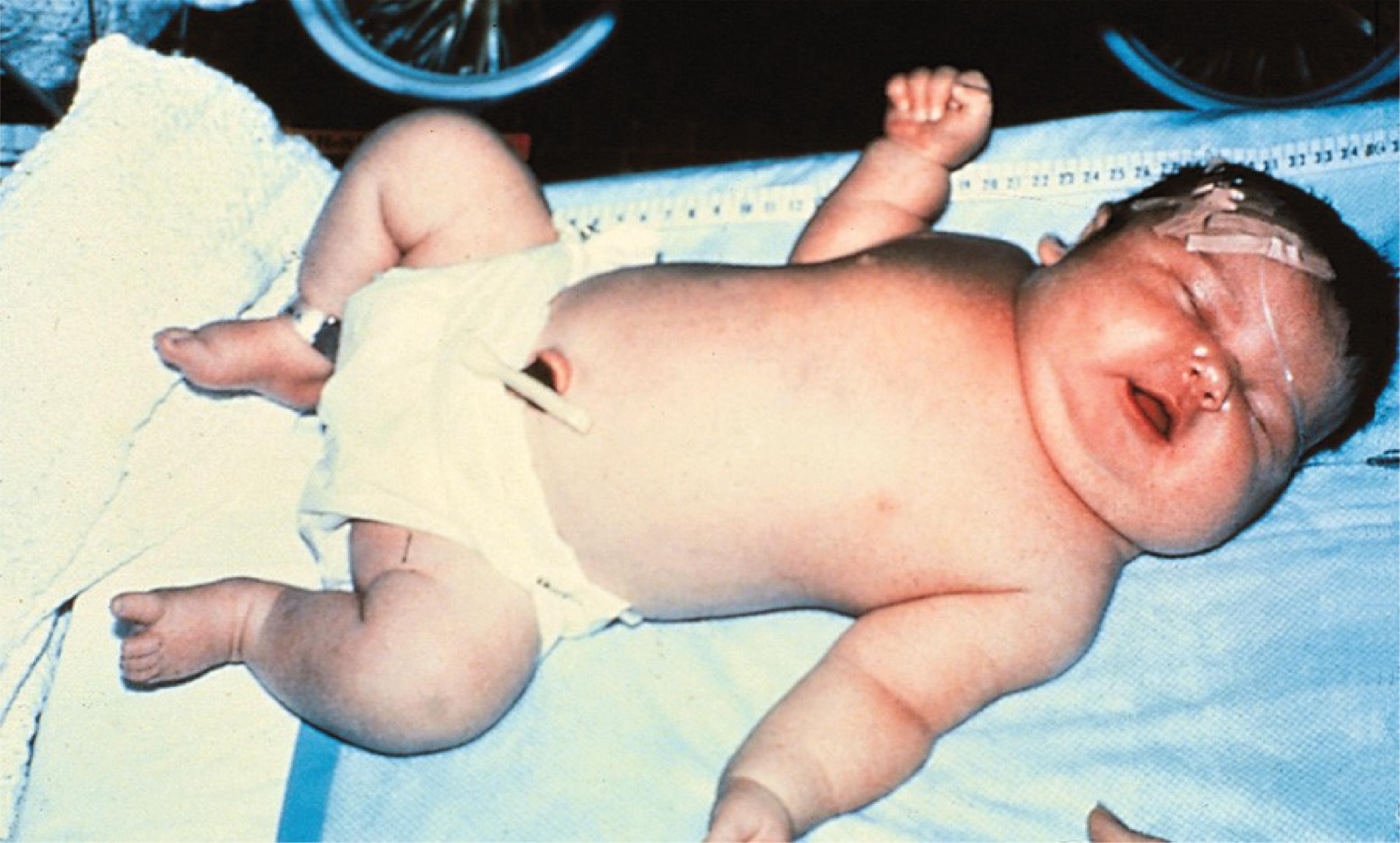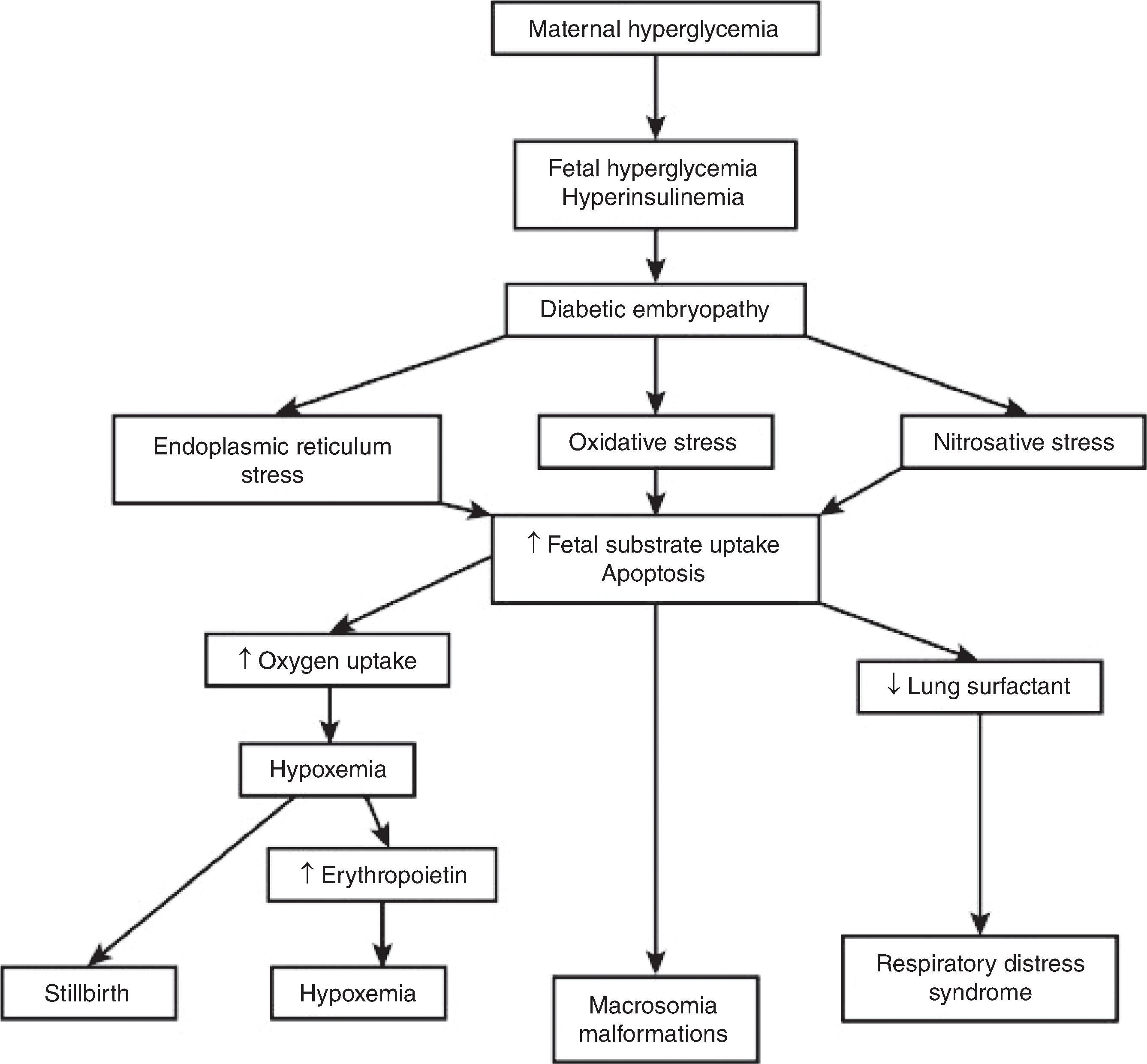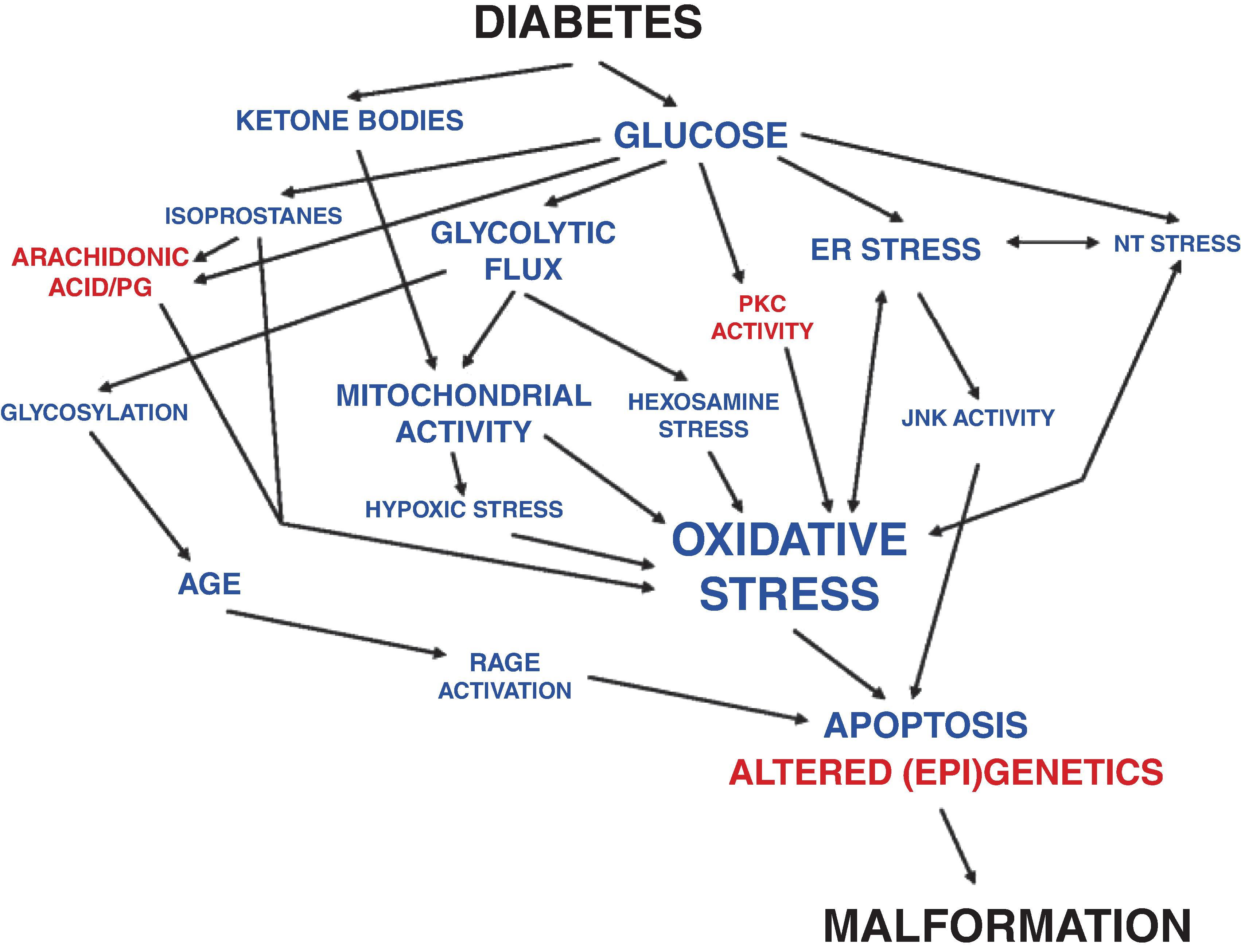Physical Address
304 North Cardinal St.
Dorchester Center, MA 02124
Diabetes in pregnant women can be visualized in two distinct subsets: 1% to 2% of women have pregestational disease, whereas 6% to 9% develop diabetes during pregnancy.
In mothers with pregestational or early-onset diabetes, placental vasculopathy may cause growth restriction, altered organogenesis, and congenital anomalies.
In mothers with gestational diabetes, the fetuses tend to become large for date, show a wide range of metabolic changes, and may be predisposed to short- and long-term complications.
The most frequently seen metabolic complications in infants of diabetic mothers (IDMs) are hypoglycemia, hypocalcemia, and hypomagnesemia.
Respiratory and cardiovascular complications contribute importantly to neonatal morbidity and mortality, especially in preterm neonates.
IDMs have a two- to four-fold increase in the risk of congenital malformations compared with the general population. These malformations are seen most frequently in the cardiovascular, neurologic, renal, gastrointestinal, and skeletal systems.
Infants born to mothers with diabetes mellitus (DM) in pregnancy are predisposed to short- and long-term complications. The extent of these complications depends on the type of diabetes (pregestational or gestational); onset and duration of glucose intolerance; severity of diabetes (degree of glucose intolerance, presence of complications); and therapeutic control. This chapter will review the epidemiology of maternal diabetes, pathophysiology of complications, clinical features, management, and prognosis in affected infants.
In 2019, an estimated 20 million women experienced hyperglycemia during pregnancy. This accounted for nearly 16% of all live births in the world. Diabetes noted during pregnancy may have already been there as a pregestational disease, referring to type 1 or type 2 DM diagnosed before pregnancy, or it may get diagnosed during pregnancy and then be labeled as gestational diabetes mellitus (GDM). The overall incidence of pregestational diabetes is about 1% to 2%, and that of GDM is about 6% to 9%.
The global incidence of diabetes during pregnancy is rising. In the United States the prevalence of pregestational diabetes increased by 37% and that of GDM by 56% during the period 2000 to 2010. The most important risk factors for maternal diabetes are maternal age ≥35 years, urban residence, and low socioeconomic status. , Prevalence varies by race and ethnicity; Black women have higher rates of pregestational diabetes, whereas Asian women are more susceptible to GDM. Latinas are at higher risk of both pregestational diabetes and GDM. Obesity, family history of diabetes, high parity, and older age at first birth increase the risk of gestational diabetes.
Because maternal plasma glucose can cross the placenta by facilitated diffusion, maternal hyperglycemia leads to fetal hyperglycemia. Early-onset placental vasculopathy may cause growth restriction and may alter organogenesis (diabetic embryopathy) with recognizable patterns of congenital anomalies. Poorly controlled GDM and hyperglycemia can cause macrosomia ( Fig. 24.1 ).

The metabolic changes in infants of diabetic mothers (IDMs) are summarized in Fig. 24.2 . In the second trimester, the fetal pancreas responds to the rise in glucose levels by producing insulin, leading to fetal hyperinsulinemia. Fetal hyperglycemia and hyperinsulinemia drive the multisystemic pathology present in IDMs. Elevated fetal insulin levels, upregulated glucose transporters, and increased intracellular glucose concentrations can enhance mitochondrial oxidative phosphorylation. The resulting increase in the production of reactive oxygen species can contribute to diabetic embryopathy. Chronically upregulated fetal metabolic rate and oxygen consumption lead to relative hypoxemia, which in turn elevate proangiogenic factors such as leptin, vascular endothelial growth factor, fibroblast growth factor 2, and matrix metalloproteinases (MMPs) such as MMP14 and MMP15, which lead to altered tissue histoarchitecture and epigenetic changes.

IDMs experience several types of metabolic stress, including in the oxidative, nitrosative, endoplasmic reticulum (unfolded protein response), and hexosamine pathways. Smith et al. demonstrated that insulin impedes the cortisol-induced synthesis of phosphatidylcholine (an essential substrate for surfactant production) by type II alveolar pneumocytes. Hyperinsulinemia has also been shown to suppress the structural maturation of the fetal lung. Together, all these changes predispose IDMs to respiratory distress syndrome even at peri-term gestational ages. IDMs also have an excessive accumulation of liver glycogen, cardiac and skeletal muscles, adipose tissue, and other tissues. Fetal hyperglycemia and hyperinsulinemia accelerate glycogenesis, lipogenesis, and protein synthesis. The cellular effects include hypertrophy and hyperplasia of the pancreatic islets of Langerhans, myocardial hypertrophy, and increased cytoplasm in hepatocytes.
IDMs are at a higher risk of hypoxia and ischemia at peri- and intrapartum stages than are infants of nondiabetic mothers. Fetal hypoxemia raises erythropoietin levels, which can stimulate erythroid progenitor growth that is already activated by hyperinsulinemia. These two phenomena can lead to polycythemia and consequently to neonatal hyperviscosity syndrome. , Many fetal regions have concomitant tissue hypoxia due to increased glycation of hemoglobin and low concentrations of 2,3-diphosphoglycerate, which increase erythropoietin expression and red blood cell (RBC) production. Some premature infants develop polycythemia, and the larger RBC mass and turnover may increase the bilirubin loads to exceed the capacity of the developing liver and cause hyperbilirubinemia.
In the fetal metabolic environment, even small changes can induce epigenetic modifications with altered gene expression and phenotypic changes ( Fig. 24.3 ). , The risk of diabetic embryopathy increases with prolonged fetal exposure to maternal hyperglycemia. , , Insulin binds to the type I insulin-like growth factor receptor to induce intracellular phosphorylation pathways, which activate cellular growth-promoting factors. In IDMs, myocardial hypertrophy leads to cardiomegaly with asymmetric, disproportionate septal hypertrophy. , There is also widespread cellular apoptosis with altered genetics and epigenetic systems, resulting in dysmorphogenesis.

Become a Clinical Tree membership for Full access and enjoy Unlimited articles
If you are a member. Log in here